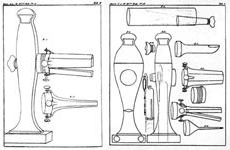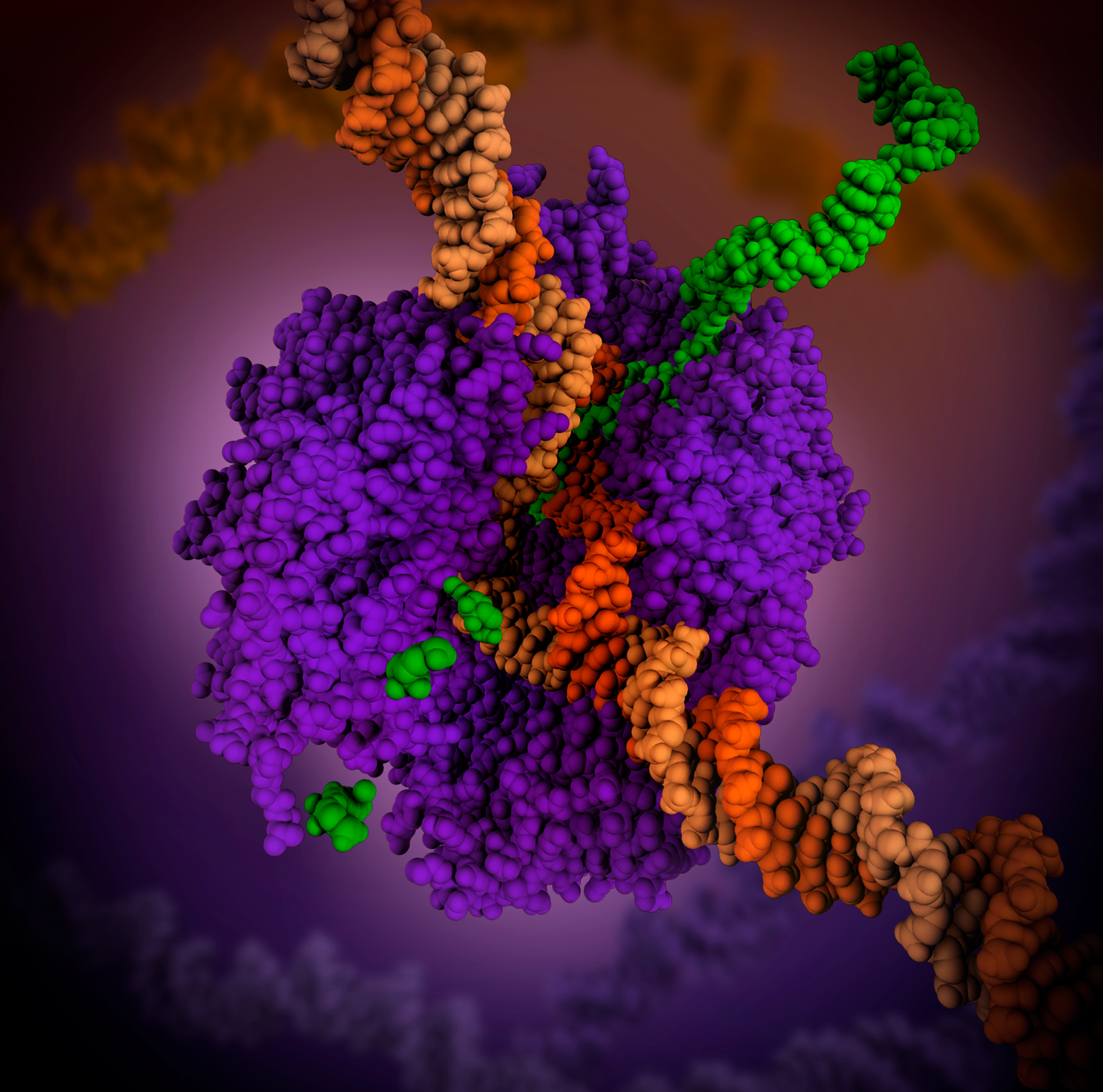|
Hepatitis D
Hepatitis D is a type of viral hepatitis caused by the hepatitis delta virus (HDV). HDV is one of five known hepatitis viruses: A, B, C, D, and E. HDV is considered to be a satellite (a type of subviral agent) because it can propagate only in the presence of the hepatitis B virus (HBV). Transmission of HDV can occur either via simultaneous infection with HBV ( coinfection) or superimposed on chronic hepatitis B or hepatitis B carrier state ( superinfection). HDV infecting a person with chronic hepatitis B (superinfection) is considered the most serious type of viral hepatitis due to its severity of complications. These complications include a greater likelihood of experiencing liver failure in acute infections and a rapid progression to liver cirrhosis, with an increased risk of developing liver cancer in chronic infections. In combination with hepatitis B virus, hepatitis D has the highest fatality rate of all the hepatitis infections, at 20%. A recent estimate from 2020 su ... [...More Info...] [...Related Items...] OR: [Wikipedia] [Google] [Baidu] |
Hepatitis
Hepatitis is inflammation of the liver parenchyma, liver tissue. Some people or animals with hepatitis have no symptoms, whereas others develop yellow discoloration of the skin and whites of the eyes (jaundice), Anorexia (symptom), poor appetite, vomiting, fatigue (medicine), tiredness, abdominal pain, and diarrhea. Hepatitis is ''acute (medicine), acute'' if it resolves within six months, and ''chronic condition, chronic'' if it lasts longer than six months. Acute hepatitis can self-limiting (biology), resolve on its own, progress to chronic hepatitis, or (rarely) result in acute liver failure. Chronic hepatitis may progress to scarring of the liver (cirrhosis), liver failure, and liver cancer. Hepatitis is most commonly caused by the virus ''hepatovirus A'', ''hepatitis B virus, B'', ''hepatitis C virus, C'', ''hepatitis D virus, D'', and ''hepatitis E virus, E''. Other Viral hepatitis, viruses can also cause liver inflammation, including cytomegalovirus, Epstein–Barr virus, ... [...More Info...] [...Related Items...] OR: [Wikipedia] [Google] [Baidu] |
Gastroenterology
Gastroenterology (from the Greek gastḗr- "belly", -énteron "intestine", and -logía "study of") is the branch of medicine focused on the digestive system and its disorders. The digestive system consists of the gastrointestinal tract, sometimes referred to as the ''GI tract,'' which includes the esophagus, stomach, small intestine and large intestine as well as the accessory organs of digestion which include the pancreas, gallbladder, and liver. The digestive system functions to move material through the GI tract via peristalsis, break down that material via digestion, absorb nutrients for use throughout the body, and remove waste from the body via defecation. Physicians who specialize in the medical specialty of gastroenterology are called gastroenterologists or sometimes ''GI doctors''. Some of the most common conditions managed by gastroenterologists include gastroesophageal reflux disease, gastrointestinal bleeding, irritable bowel syndrome, inflammatory bowel disease (IBD ... [...More Info...] [...Related Items...] OR: [Wikipedia] [Google] [Baidu] |
Ribozyviria
''Ribozyviria'' is a realm of satellite nucleic acids — infectious agents that resemble viruses, but cannot replicate without a helper virus. Established in ICTV TaxoProp 2020.012D, the realm is named after the presence of genomic and antigenomic ribozymes of the '' Deltavirus'' type. The agents in ''Ribozyviria'' are satellite nucleic acids, which are distinct from satellite viruses in that they do not encode all of their own structural proteins but require proteins from their helper viruses in order to assemble. Additional common features include a rod-like structure, an RNA-binding "delta antigen" encoded in the genome, and animal hosts. Furthermore, the size range of the genomes of these viruses is between around 1547–1735nt, they encode a hammerhead ribozyme or a hepatitis delta virus ribozyme, and their coding capacity only involves one conserved protein. Most lineages of this realm are poorly understood, the notable exception being the genus ''Deltavirus'', comprisin ... [...More Info...] [...Related Items...] OR: [Wikipedia] [Google] [Baidu] |
ADAR
Adar (Hebrew: , ; from Akkadian ''adaru'') is the sixth month of the civil year and the twelfth month of the religious year on the Hebrew calendar, roughly corresponding to the month of March in the Gregorian calendar. It is a month of 29 days. Names and leap years The month's name, like all the others from the Hebrew calendar, was adopted during the Babylonian captivity. In the Babylonian calendar the name was Araḫ Addaru or Adār ('Month of Adar'). In leap years, it is preceded by a 30-day intercalary month named Adar Aleph (, ''aleph'' being the first letter of the Hebrew alphabet), also known as "Adar Rishon" (''First Adar'') or "Adar I", and it is then itself called Adar Bet (, '' bet'' being the second letter of the Hebrew alphabet), also known as "Adar Sheni" (''Second Adar'') or "Adar II". Occasionally instead of Adar I and Adar II, "Adar" and "Ve'Adar" are used (Ve means 'and' thus: And-Adar). Adar I and II occur during February–March on the Gregorian calendar. ... [...More Info...] [...Related Items...] OR: [Wikipedia] [Google] [Baidu] |
Ribozyme
Ribozymes (ribonucleic acid enzymes) are RNA molecules that have the ability to Catalysis, catalyze specific biochemical reactions, including RNA splicing in gene expression, similar to the action of protein enzymes. The 1982 discovery of ribozymes demonstrated that RNA can be both genetic material (like DNA) and a biological catalyst (like protein enzymes), and contributed to the RNA world hypothesis, which suggests that RNA may have been important in the evolution of prebiotic self-replicating systems. The most common activities of natural or Directed evolution, ''in vitro'' evolved ribozymes are the cleavage (or Ligation (molecular biology), ligation) of RNA and DNA and peptide bond formation. For example, the smallest ribozyme known (GUGGC-3') can aminoacylate a GCCU-3' sequence in the presence of PheAMP. Within the ribosome, ribozymes function as part of the large subunit ribosomal RNA to link amino acids during Translation (biology), protein synthesis. They also participate ... [...More Info...] [...Related Items...] OR: [Wikipedia] [Google] [Baidu] |
Hepatitis Delta Virus Ribozyme
The hepatitis delta virus (HDV) ribozyme is a non-coding RNA found in the hepatitis delta virus that is necessary for viral replication. Hepatitis delta virus is the only known human virus that utilizes ribozyme activity to infect its host. The ribozyme acts to process the RNA transcripts to unit lengths in a self-cleavage reaction during replication of the hepatitis delta virus, which is thought to propagate by a double rolling circle mechanism. The ribozyme is active ''in vivo'' in the absence of any protein factors and was the fastest known naturally occurring self-cleaving RNA at the time of its discovery. The crystal structure of this ribozyme has been solved using X-ray crystallography and shows five helical segments connected by a double pseudoknot. In addition to the sense (genomic version), all HDV viruses also have an antigenome, antigenomic version of the HDV ribozyme. This version is not the exact complementary sequence but adopts the same structure as the sense (g ... [...More Info...] [...Related Items...] OR: [Wikipedia] [Google] [Baidu] |
Antigenome
{{Short pages monitor ... [...More Info...] [...Related Items...] OR: [Wikipedia] [Google] [Baidu] |
RNA Polymerase
In molecular biology, RNA polymerase (abbreviated RNAP or RNApol), or more specifically DNA-directed/dependent RNA polymerase (DdRP), is an enzyme that catalyzes the chemical reactions that synthesize RNA from a DNA template. Using the enzyme helicase, RNAP locally opens the double-stranded DNA so that one strand of the exposed nucleotides can be used as a template for the synthesis of RNA, a process called transcription. A transcription factor and its associated transcription mediator complex must be attached to a DNA binding site called a promoter region before RNAP can initiate the DNA unwinding at that position. RNAP not only initiates RNA transcription, it also guides the nucleotides into position, facilitates attachment and elongation, has intrinsic proofreading and replacement capabilities, and termination recognition capability. In eukaryotes, RNAP can build chains as long as 2.4 million nucleotides. RNAP produces RNA that, functionally, is either for protei ... [...More Info...] [...Related Items...] OR: [Wikipedia] [Google] [Baidu] |
HBsAg
HBsAg (also known as the Australia antigen) is the surface antigen of the hepatitis B virus (HBV). Its presence in blood indicates existing hepatitis B infection. Structure and function The viral envelope of an enveloped virus has different surface proteins from the rest of the virus which act as antigens. These antigens are recognized by antibody proteins that bind specifically to one of these surface proteins. The full-length HBsAg is called the L (for "large") form. It consists of a preS loop, a first transmembrane helix (TM1), a cytosolic loop (CYL), another TM helix (TM2), an antigenic loop (AGL), followed by two TM helices (TM3 and TM4). The preS loop can either be on the outside (lumen), or be located in the cytosol with the TM1 helix not actually penetrating the membrane. The M ("medium") form has a truncated preS; the part of preS1 unique to L is called preS1, while the part shared by L and M is called preS2. preS2 is always located in the lumen. The S ("small") form h ... [...More Info...] [...Related Items...] OR: [Wikipedia] [Google] [Baidu] |
SLC10A1
Sodium/bile acid cotransporter also known as the Na+- taurocholate cotransporting polypeptide (NTCP) or liver bile acid transporter (LBAT) is a protein that in humans is encoded by the ''SLC10A1'' (solute carrier family 10 member 1) gene. Structure Sodium/bile acid cotransporters are integral membrane glycoproteins. Human NTCP contains 349 amino acids and has a mass of 56 kDa. Function Bile acid:sodium symporters participate in the enterohepatic circulation of bile acids. Two homologous transporters are involved in the reabsorption of bile acids. One of these absorbs bile acids from the intestinal lumen, the bile duct, and the kidney with an apical localization ( ileal sodium/bile acid cotransporter). The other is this protein and is expressed in the basolateral membranes of hepatocytes (NTCP). As a cotransporter, NTCP binds two sodium ions and one (conjugated) bile salt molecule, thereby providing a hepatic influx of bile salts. Other transported molecules include stero ... [...More Info...] [...Related Items...] OR: [Wikipedia] [Google] [Baidu] |
Viroids
Viroids are small single-stranded, circular RNAs that are infectious pathogens. Unlike viruses, they have no protein coating. All known viroids are inhabitants of angiosperms (flowering plants), and most cause diseases, whose respective economic importance to humans varies widely. A recent metatranscriptomics study suggests that the host diversity of viroids and viroid-like elements is broader than previously thought and that it would not be limited to plants, encompassing even the prokaryotes. The first discoveries of viroids in the 1970s triggered the historically third major extension of the biosphere—to include smaller lifelike entities—after the discoveries in 1675 by Antonie van Leeuwenhoek (of the "subvisible" microorganisms) and in 1892–1898 by Dmitri Iosifovich Ivanovsky and Martinus Beijerinck (of the "submicroscopic" viruses). The unique properties of viroids have been recognized by the International Committee on Taxonomy of Viruses, in creating a new o ... [...More Info...] [...Related Items...] OR: [Wikipedia] [Google] [Baidu] |





